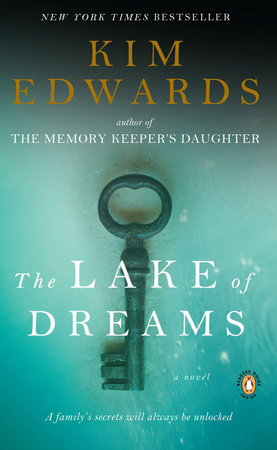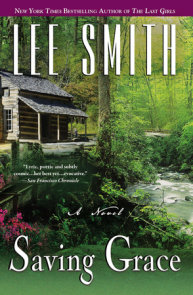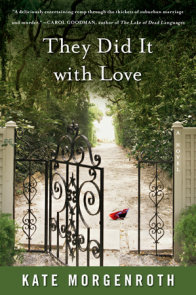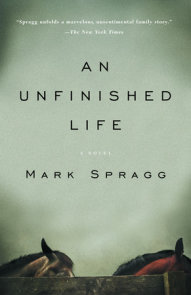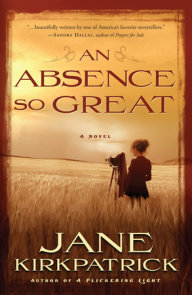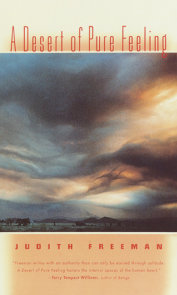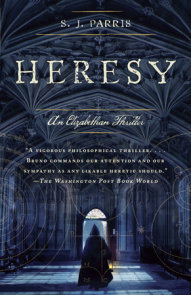READERS GUIDE
Questions and Topics for Discussion
INTRODUCTION
“All these years I’d taken such comfort in my wandering life, but really I’d been as anchored to the night my father died as Blake had been, circling it from afar, still caught within its gravity.” (p. 104)
As a child, Lucy Jarrett received a unique inheritance. Her father, a third-generation locksmith, taught her how “to listen to the whisper of metal shifting” (p. 36) and to open locks without a key. Since then, Lucy has left her hometown—and the pain of her father’s mysterious death—far behind. But years later she finds a cache of papers whose long-held secrets will eventually unravel her family’s cherished history and release Lucy from her haunted past.
It’s been more than a decade since Martin Jarrett drowned in the Lake of Dreams, and Lucy has made only brief visits back to the eponymously named upstate New York village. But when she receives word that her mother has been injured in a car accident, her boyfriend, Yoshi, convinces her that a change of scenery might help her regain perspective and a sense of purpose.
Lucy first met Yoshi, an engineer, while she was on a short-term hydrology assignment in Jakarta. They’d quickly “fallen in love the way it is possible to fall in love overseas, cut off from everything” (p. 6). Afterwards, however, Yoshi found lucrative work in Japan while Lucy remained unemployed. She accompanied him only to become isolated and lonely, adrift in a foreign land.
At a crossroads in her life and in their relationship, Lucy returns to the Lake of Dreams to find the once quiet village on the brink of upheaval. The recent closing of the area’s biggest employer, a local military depot, has left a large area of wetlands hotly contested between developers, conservationists, and the descendants of the Iroquois tribe who originally inhabited it.
Closer to home, her brother, Blake, has just accepted a job with their Uncle Art, who finagled their father out of his share of the family business years before. And their mother, Evie, is enjoying a budding romance after years of widowhood.
Perhaps most unsettling, however, is news that her first love, Keegan Fall, has also returned. Keegan now owns and operates a popular artisanal glassworks, and Lucy must acknowledge how “the feelings I’d had for him all those years ago surged up as if I’d never left” (p. 60).
Disoriented by jetlag and a flood of conflicting emotions, Lucy seeks refuge in her family’s lakeside home. There, peeling paint exposes a cupboard that attracts Lucy’s attention, and she picks the lock. Inside lies a mishmash of papers dated from between 1913 and 1925. Some are newspaper clippings and relics from the suffrage movement, but there are also two compelling and provocative handwritten notes whose author, Rose, Lucy cannot place in the family tree.
She is intrigued by this mystery, and—as she awaits Yoshi’s imminent arrival—grows determined to learn Rose’s true identity, embarking on a quest that will uncover the past, piece by piece. The scant clues gradually lead her through a Byzantine web of deception whose resolution will shake the Jarrett clan to its core.
Beautifully written and lushly imagined by one of today’s most gifted novelists, Kim Edwards’s The Lake of Dreams is an enthralling family saga rich with insights on the past’s inexorable power over all our lives.
ABOUT KIM EDWARDS
Kim Edwards is the author of the #1 New York Times bestseller The Memory Keeper’s Daughter, which has been published in more than thirty-eight countries, and a collection of short stories, The Secrets of a Fire King. Her honors include the Whiting Award, the British Book Award, and USA Today‘s Book of the Year, as well as the Nelson Algren Award, a National Magazine Award, and a grant from the NEA. She is an associate professor at the University of Kentucky.
A CONVERSATION WITH KIM EDWARDS
Q. Your first novel, The Memory Keeper’s Daughter, sold more than four million copies and was a #1 New York Timesbestseller. What was your experience writing a follow-up to such a spectacularly popular debut?
I’ve always written, and knew from the time I was learning to read that I wanted to be a writer, so it was completely natural for me to embark on another novel once The Memory Keeper’s Daughter was complete, even before it was published. Each story begins with fragments, images, a glimpse, and in those early days with The Lake of Dreams I was doing a great deal of writing outside the narrative—character sketches and histories, writing exercises, lots and lots of free-writing of all kinds. I set myself a goal of 1,000 words a day, but I put no other constraints on the work I was doing. Very few of these early pages ended up directly in the novel, but this underlying work was necessary for me to understand the characters and the narrative. I was also reading a great deal about myths, in particular about the hero’s journey and quest narratives, thinking about structure and Lucy’s experiences. I read Thomas Mann’s tetrology, Joseph and His Brothers, and started reading contemporary theologians, too.
Thus, by the time all the excitement began over The Memory Keeper’s Daughter, I was already deeply immersed in The Lake of Dreams. I had to put writing aside altogether for a couple of years to respond to the astonishing events—The Memory Keeper’s Daughter became a bestseller internationally, and won the British Book Award. When I finally came back to my desk, it was very satisfying, as well as very grounding, to return to writing in general, and to this story in particular, with so much already begun. Gradually, I was able to block out the world with all its clamor and demands and reenter the fictional world I’d been creating. Again, this shift felt quite natural and gratifying. Through times of great obscurity and times of great recognition, the constant for me, and the greatest satisfaction, has always been the writing itself.
Q. How—if at all—has success affected your job as a professor of creative writing? What advice would you give to an aspiring writer?
I’ve been on an extended leave in order to focus on writing, so I haven’t been in the classroom much lately. The advice I’d give to beginning writers remains the same, however. First, write. Every day, in a disciplined way. Read as much as possible, read everything. Take writing classes to deepen your understanding of narrative structure and character development. Find a group of other aspiring writers and exchange manuscripts—becoming a close reader of the work of others will ultimately help you turn a clear eye on your own, and the community will help sustain you through the years it takes to master aspects of craft. Be patient, and take pleasure in the joy of writing.
Q. In The Lake of Dreams, you give a subtle nod to The Memory Keeper’s Daughter when Lucy looks at the book her mother is reading and “glimpsed an ethereal baby dress against a background of black” (p. 143). Both novels have abandoned children at their heart. What draws you to explore this theme?
That’s a good question. It’s not personal, at least not directly—my parents have been married for fifty-five years and still live in the house they built in 1958, where I grew up with my two brothers and my sister. Both my grandmothers lost their mothers at young ages and ended up in difficult situations, so perhaps hearing those stories of loss did influence me obliquely.
I think, however, that there are deeper and more interesting underlying reasons. Both of my novels deal with situations in which social structures and mores affect the individual lives of my characters. In The Memory Keeper’s Daughter, the assumptions and expectations about Down’s syndrome that were prevalent in the 1960s allowed David Henry to believe he was doing the right thing to give his daughter away. He acted from a position of power, but for Rose, in The Lake of Dreams, the situation was much different. Although Rose lacked rights we’ve come to take for granted, such as the right to vote, to own property, and to have an education, she understood her own integrity as a human being and stood up for what she believed to be right, carving out a life for herself against difficult odds and opening the path for those who would follow, even when that meant leaving her child in the care of others. What connects the two situations, in my view, is the pressure that dysfunctional aspects of society put on individuals, even on the bonds we tend to think of as being the strongest and most inviolate of all—that of parents with their children.
I’ll add to this that variations on the situations in these two novels happen all the time, all around us. Several years ago I started an ESL program to meet the needs of the growing Hispanic community in my city. We worked with a literacy organization; the classes were held at a church. I taught in this program weekly for five years, and during that time I heard again and again stories that broke my heart: the couple who took turns sleeping in their car between shifts at McDonalds so they could send money home to their families, including the toddler they’d left behind; the woman who had not seen her two older children for seven years, not since they were eight and nine years old and she’d left them to try to work her way out of poverty and provide them with food and education. These were gentle and loving people who had been forced by circumstances to make choices no parent should ever have to face.
Q. Whose story did you envision first: Lucy’s or Rose’s?
Actually, I started with Evie’s story. Before my story collection The Secrets of a Fire King was published, I finished a draft, some 400 pages long, of a novel that was a precursor to The Lake of Dreams. Some familiar elements were in that book—the comet tying an intergenerational novel together, a complex family history, and the thematic concerns with regard to the land—but the draft was a youthful effort, and it ended up in my desk drawer. I tried again, a few years later, using a different voice, but hit a wall about 200 pages in and put the book aside to write The Memory Keeper’s Daughter.
By the time I returned to The Lake of Dreams I knew it was Lucy’s story. I had her voice, which is always the crucial discovery. Still, as I wrote more deeply into the narrative, another voice, this one from the past, just kept persisting. I finally started writing it down, thinking I could simply understand the back story and how it had influenced Lucy and then put aside the pages I was writing. Gradually, however, the story of Rose Jarrett took on its own life, weaving its way into the contemporary narrative in ways I could not have imagined when I started.
Q. Where The Memory Keeper’s Daughter is a very intimate family saga about a child with Downs syndrome, this novel is crafted against a much broader socio-political backdrop (e.g. the American suffrage movement, Native American rights, and wildlife preservation). What inspired this shift?
First, I disagree with this distinction. The Memory Keeper’s Daughter does focus on individual lives, but it also takes place over several decades, and against the backdrop of the quite dramatic cultural shifts that happened in the United States during the 1960s and 1970s. The possibilities for women changed, and parents launched an extraordinary grassroots movement to gain greater acceptance for children who had disabilities, to name just two. Likewise, The Lake of Dreams is also the story of particular characters, living their lives in particular times. As a writer, I’m interested in the way that historical events and social mores influence the way we understand the world and the decisions we make. I don’t think it’s possible to isolate individuals, or characters, from the eras and cultures they inhabit.
Q. After you earned your graduate degrees—an MFA from the Iowa Writers Workshop and an MA in linguistics—you lived and taught in Asia for several years. Like Lucy, you spent time in several countries. Are any of her experiences based on your own?
Not really, not in more than a general sense. My first summer in Japan was full of earthquakes, which was unsettling, and that made its way into the novel because it struck me as a perfect way to presage the unsettling to come in Lucy’s personal and emotional life. I traveled a bit in Indonesia, but didn’t spend time there, though I did draw generally on my years in Malaysia to imagine what Lucy’s life would have been like there. Cambodia was a moving and important experience for me, one I’ve never been able to write about directly, so certainly having Lucy go there was a way of remembering my own connection to the country and to its incredibly strong people. One thing I did give Lucy from my own experience is the shift in her perspective. In total, I spent nearly six years living away from my own country and culture, and that has necessarily changed and shaped the way I see the world.
Q. You include incredible descriptions of both the art of glassmaking and technical details about hydrology—not to mention information about the suffrage movement. What were some of the more interesting things you discovered in the course of your research?
It was very interesting to read about the “Silver Ghost,” which was the name given to the first Rolls Royce, and to imagine a world before the automobile. I spent time at glass studios and even tried my hand at blowing glass, as well as reading about glassmaking and the art of stained glass windows. Since I grew up very near Seneca Falls, N.Y., the research I did on the women’s suffrage movement was very real and alive to me—the authors were talking about events that happened on streets I had walked, in places that I knew. Also, I was intrigued to realize, at a point far into the narrative, that all the imagery of the book was working together in a harmonious but unplanned way. The motif of the circles was in this draft of the book from the beginning, and wheelwrights resonated with that image quite directly; that was a conscious choice. Yet much later, long after I’d written the scenes, I learned that early stained glass windows were modeled on the shapes of wheels—they were called ‘wheel windows’—and that the word orbit comes from the Latin orbita, meaning a rut or a track, like that left by a wheel, traced in the sky. Also, of course there are the many relevant associations with roses, from circles to chalices. I didn’t plan this, not at all; in order to have any power or authenticity, images have to arise from the work itself, they cannot be imposed. So I was fascinated as I began to realize how everything resonated, how deeply and intricately all the imagery was connected.
Probably the most interesting thing, however, and perhaps the most sobering, was to realize how many of the issues the early feminists faced are still under discussion today. Only within my lifetime has the church begun to ordain women, for instance, and many denominations still exclude women from positions of authority. I was writing and researching this novel during the 2008 election, which meant that I was reading about the events and debates of the early 1900s while arguments about women’s reproductive health, access to information, and even, extremely, the 19th amendment, swirled around me in the present, too. It was a compelling reminder that the rights I take for granted haven’t always been there.
Q. You write about Keegan’s work and Frank Westrum’s stained-glass windows with such passion. Have you always been interested in this medium, or is it more of a metaphorical vehicle?
Early on in the writing of this novel I had a sense that Keegan was a stained glass artist. I was drawn to the beauty of the process, the way glass moves between liquid and solid states, and the idea of shaping glass with breath. While I took notes and kept extensive journal entries about the experiences, it was a year or more before I began to write the scenes in the novel involving glass. I had to understand the characters first, and allow time for the experiences and information I’d collected to distill into the imagery and metaphors essential for this novel.
Q. Who are some of the writers that you most admire?
There are so many that it’s hard to choose. Virginia Woolf is a favorite, and I always look forward to Alice Munro and William Trevor. Seamus Heaney, too, and Mary Oliver. I enjoyed Susan Cheever’s biography of Louisa May Alcott, both for Cheever’s writing as for the chance to reacquaint myself with Alcott, whose books I loved as a girl. Recently, I’ve also started to read the collected works of Thomas Hardy, and have discovered several contemporary theologians, including Teilhard de Chardin, Dorothy Soelle, and Elizabeth Johnson; their work is brilliant and thought-provoking.
Q. What are you working on now?
I’ve had the first glimpses of the next novel, and I understand something about its characters and concerns, but it’s far too soon to say more; it’s still a secret, and will be for years.
DISCUSSION QUESTIONS






